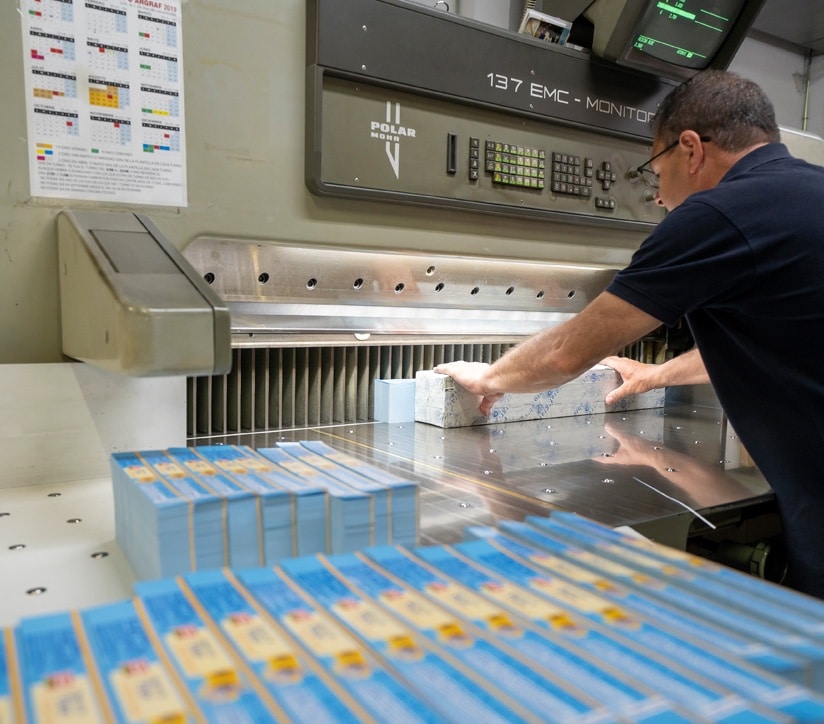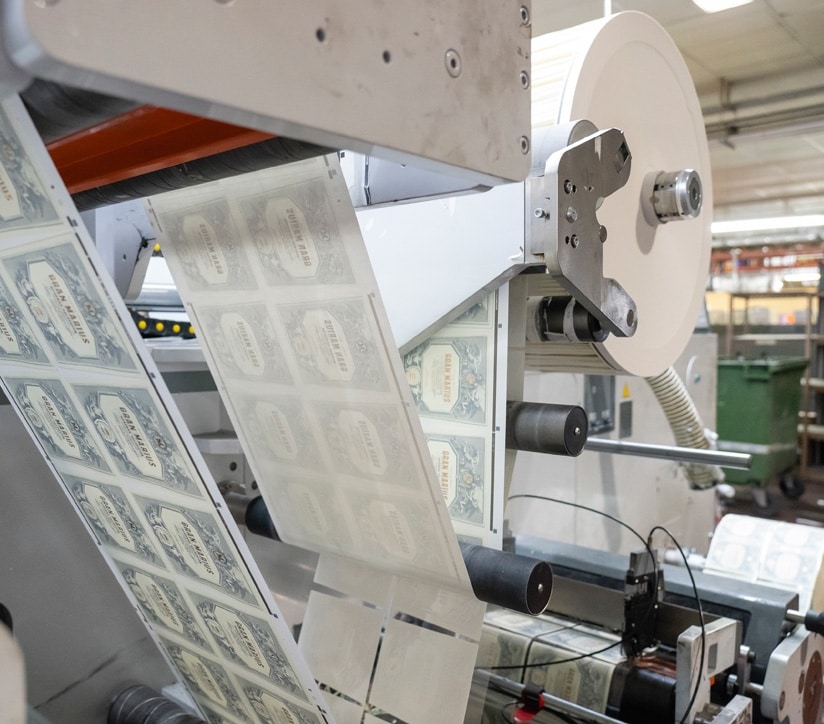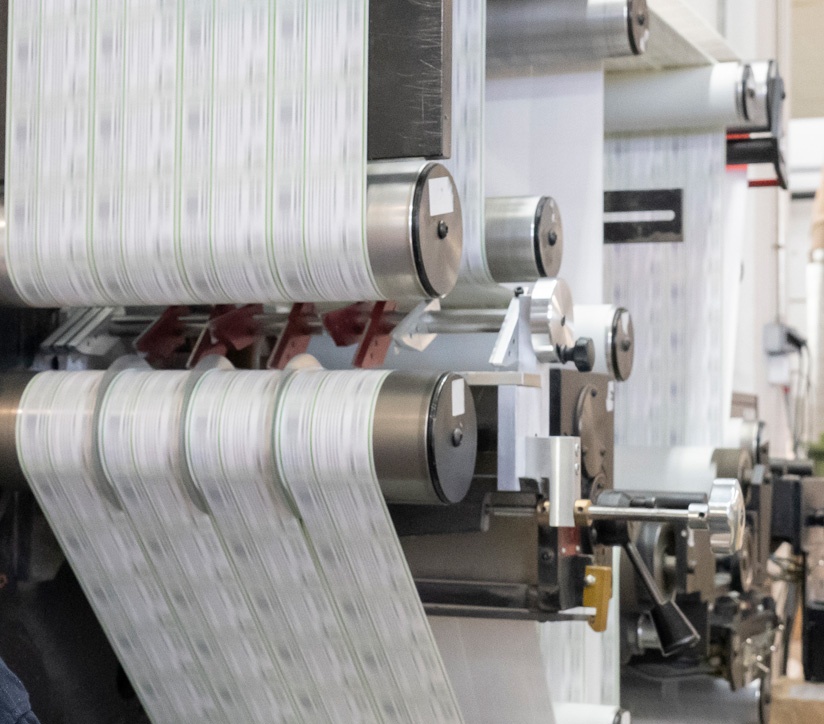El papel… Qué hubiera sido de la humanidad si el chino eunuco Cai Lun, considerado el inventor del papel, no se hubiera fijado en la corteza de los árboles para ensayar y perfeccionar el material que hasta entonces se utilizaba para escribir documentos. Su invento, un material muy similar al actual al que llamaron “papel Cai”, era flexible, resistente, económico y podía ser producido en masa.
Si algo tenemos claro es que desde entonces, año 105 d.C, ha llovido mucho, sin embargo la investigación de nuevos materiales no ha cesado nunca. Al igual que la apuesta de Grupo Argraf por seleccionar el más adecuado para cada proyecto. Y es que el papel no es únicamente un soporte, sino el elemento que, de forma muy sutil, ensalza y da valor al producto final para enriquecer el diseño.
El tándem diseño-papel deben ir unidos o, de lo contrario, uno u otro puede echar a perder el resultado. La selección de materiales resulta extremadamente importante, porque elegir el papel incorrecto, con tonos o textura inadecuados, pueden destruir un diseño genial.
Sostenibilidad, textura, impermeabilidad, durabilidad… Son muchas las propiedades que debe reunir un papel para convertirse en etiqueta de vino. Y en Grupo Argraf, con 900 millones de botellas etiquetadas, las escudriñan a fondo para elegir la opción que mejor combine todas ellas.
Como explicaba Alberto Torroba, director general de Argraf en este artículo, las etiquetas de vino actuales no solo deben impactar por la vista, sino también por el tacto. Y eso se consigue partiendo de texturas aterciopeladas, materiales ricos y naturales… Cada papel cuenta una historia, viste un producto y juega un papel fundamental en la personalidad de la marca. En otras palabras, el papel elegido para la etiqueta influye mucho en la percepción de los consumidores a la hora de comprar un vino, interpretándolo como un vino “top” o uno de baja calidad.

¿Por qué el papel lleva décadas reinando en el sector de las etiquetas? Son muchas las razones que se pueden esgrimir, pero aquí van algunas de las habituales.
- Permite gran variedad de impresión y acabados: lo cual proporciona al diseñador un amplio universo creativo.
- Texturas: el papel es al tacto como el diseño a la vista. Una textura escogida con esmero puede contar toda una historia.
- Sostenible: el papel utilizado en Argraf procede de bosques gestionados de forma responsable y es reciclable.
¿Qué papeles son los más apropiados para las etiquetas de vino?
Difícil respuesta, ya que el sector del papel es demasiado extenso. Pero si de algo estamos seguros es que, hoy por hoy, los esfuerzos más importantes para la selección de papel están enfocados en el área de Calidad y Medioambiente.
Argraf dispone del sello FSC Certified que garantiza que el origen del papel utilizado proviene de explotaciones forestales correctamente gestionadas en materia de medioambiental. También las tintas son elaboradas a base de materias primas renovables y de origen orgánico y los papeles ecológicos o de mínimo impacto medioambiental.
Si nos fijamos en el tipo de textura, los más frecuentes son el papel estucado (o couché), un papel microporo que tiene un acabado liso y suave, siendo uno de los más utilizados; el papel no estucado, con un acabado más rugoso y poroso que el estucado; y, por último, el verjurado, un tipo de papel en el que se aprecian las rayas o marcas transversales que pueden ser de grosor variable, causadas por los alambres que presionan la pasta de papel en el proceso de elaboración.
Siguiendo con la lista, encontramos los papeles Tintoretto, y aquí dos tipos, el Tintoretto Black, diseñado especialmente para envases de vidrio ya que tiene una gran resistencia a la inmersión, crucial si pensamos en etiquetas para vinos espumosos, blancos, rosados o cualquiera que requiera refrigeración o contacto con hielo. Y Tintoretto Unc, papel mate, estriado, elegante, idóneo para vinos de calidad. Sus cualidades lo hacen perfecto para relieves y estampaciones.

El papel metalizado, de color plata u oro principalmente, se utiliza en etiquetas de alta calidad. Dispone de una lámina metalizada sobre la que se realiza la impresión. Y el papel perlado con pigmentos nacarados aporta calidad al resultado.
Además, el papel se puede someter a tratamientos ultra WS u papel resistente a la humedad, que absorbe el agua sin deshacerse o elegir el papel waterproof, que repele la humedad al tiempo que mantiene su blancura, un papel perfecto para cavas, vinos con refrigeración o cervezas.
Queda claro, que la oferta de papel es casi tan extensa como las necesidades de cada proyecto. Antes de seleccionar el papel habrá de definirse qué historia queremos transmitir. Un trabajo colaborativo en el que el equipo de diseño, la bodega-cliente y Grupo Argraf deben sumar experiencias. La nuestra, supera los 70 años trabajando en el mundo del etiquetado Sin límites a tu creatividad.

